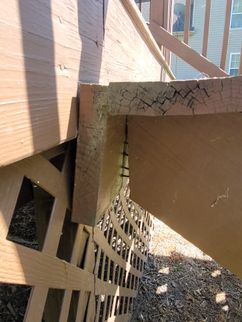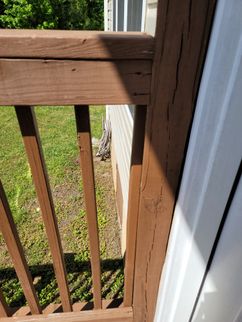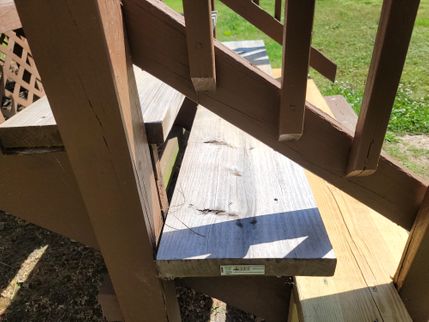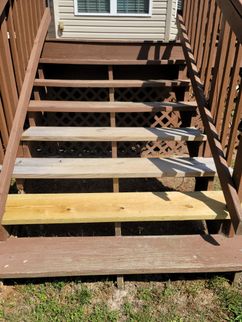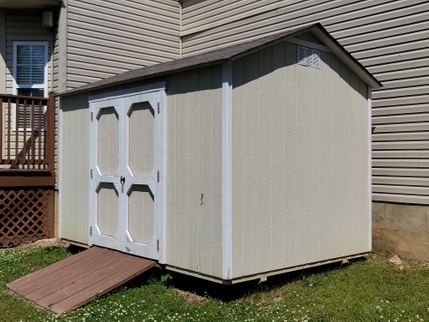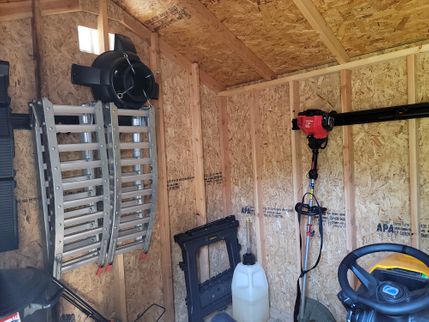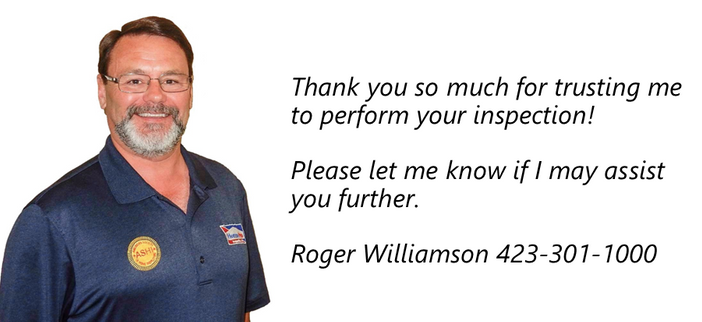How to Read This Report
This digital report or a printed version of this report should only be viewed in full color where the photos are discernible and on a device where the report page width is no less than 8.5" wide. Please note, Right and Left of the building are determined as facing the front of building shown on the report cover. The client has the duty and obligation to read the entire report. Feel free to reach out to the inspector should you have any questions or concerns.
This report is designed to inform the client of obvious major structural deficiencies, inoperative conditions and the presence of noticeable, detrimental moisture issues for areas inspected. Additionally, the inspection report may advise regarding notable safety concerns and appropriate upgrades recommended by the inspector that you should consider and act on when appropriate. Please note, undesirable conditions pertaining to this inspection may be present and unreported for concealed areas and areas with limited or blocked access.
Photos
Photos included in this report are intended to help describe a reported item or area only. The photos, while representative, may not encompass the full scope of work required to correct the item or area listed. Repairs should be based on actual condition of property and not solely on the photos included in this report. Note, when viewing photos in the online report, clicking on a photo will zoom in and enlarge the photo. Clicking on a photo a second time will enlarge and zoom in on the photo one more time.
Repairs
Repairs or corrections needed at the inspected property should be completed by competent qualified professions familiar with the type of work being performed. Obtain competitive bids as needed. Obtain further evaluation when needed.
Getting the Information to You
This report is designed to deliver important and technical information in a way that is easy to access and understand. The best way to get the layers of information that are presented in this report is to read your report online in the HTML format, which will allow you to expand your learning about the inspected property. You will notice some words or series of words highlighted in blue and underlined – clicking on these will provide you with a link to additional information, if desired. Other text colors, if present, have no real meaning. Please read all written text.
This report can also be printed on paper or to a PDF document.
Chapters and Sections
This report is divided into chapters that parcel the home into logical inspection components. Each chapter is broken into sections that relate to a specific system or component of the home. You can navigate between chapters with the click of a button on the left side margin when viewing the report online.
Observation Labels
Narrative observation labels are defined here. Some of the following observation labels may not appear in all reports. Hazardous, Key Concerns and Further Evaluation observation label types, if used, will appear in the report and in the summary. All other observation labels, when used, appear only in the report and will not appear in the summary. All narrative observation label types are labeled, and numbered to help differentiate each reported narrative observation. When narrative observation labels are given a color, the specific color used has no meaning. Some observation labels are given a specific icon to group the observation types. The specific icon used also has no meaning.
Observation labels and colors used for reporting are:
- Key Concerns:Observations listed as key concerns will typically include inoperative equipment, common and significant corrections needed for plumbing, electrical, heating/cooling, structure, interior and exterior areas including the roof covering. When used, this observation will appear in the report and in the summary.
- Further Evaluation:Observations listed as further evaluation need a more extensive or technically exhaustive evaluation. For areas where corrections may not be straight forward or where a proper plan should be developed to implement corrections, then further evaluation is recommended. To obtain further evaluation is to hire a specialist that is highly experienced in the repair or correction of a specific item or area. Some observations listed under other labels that also require further evaluation will appear under the other label only. When used, this observation will appear in the report and in the summary.
- Periodic Maintenance Needed:Observations listed as periodic maintenance needed are items or areas that are expected to have maintenance performed at some interval. Maintenance neglect may be from lack of maintenance knowledge or lack of adequate funding for periodic maintenance. Some irregular or substandard installations may need more frequent maintenance until properly replaced. Start dates and intervals for periodic maintenance are a matter of personal judgment. When used, this observation will appear only in the report.
- Safety Concerns:Observations listed as safety concerns are items or areas listed to help reduce the risk of personal injury. Safety standards and expectations change. Consideration should be given to evaluate and act upon your risk exposure to help reduce the risk of personal injury. Some observations listed under other labels that are also safety concerns will appear under the other label only, such as electrical repairs, which almost always pose some safety risk. Some safety concerns may also be considered improvements but will fall under the safety concerns label if deemed more appropriate. When used, this observation will appear only in the report.
- Routine Correction Needed:Observations listed as routine correction are not unusual for the type and age property inspected. These routine items are typically not recurring and once properly corrected should not require repetitive correction. When used, this observation will appear only in the report.
- Monitor:Observations listed as monitor are typically items or areas that need subsequent observations and should be monitored over time to obtain historical data. These items may or may not require correction in the future based upon their performance over time. If you are unable to do the monitoring, the inspector recommends you appropriately schedule monitoring by a qualified competent contractor. Some observations listed under other labels that also may require monitoring will appear under the other label only. When used, this observation will appear only in the report.
- Improve:Observations listed as improve are items or areas that were ready for improvement or upgrade. This label is used for predictable expected opportunities to better the property condition or installation deficiencies that may or may not affect equipment function. Some observations listed under other labels that also may be considered improvements will appear under the other label only. When used, this observation will appear only in the report.
- Note:Notes are general remarks or comments elaborating on descriptions of systems, limitations, restrictions, or other similar conditions present during the inspection. Notes do not appear in the summary.
- Inspector Informational Note:Inspector informational note regarding inspection process.
- Description:Descriptive information for various aspects of the property, equipment, items, or areas noted during the inspection. Descriptions do not appear in the summary.
- Deck Description:Description of observed deck conditions and issues.
Summary Page
For convenience, the report contains a summary. The inspector uses the Summary to list non Periodic Maintenance issues that, in his opinion, he would expect to be completed before marketing the home for sale. Be advised, the summary contains only text from the observations listed as Key Concerns, Further Evaluation Needed, Hazardous and when applicable, New Construction Builder Punch List Items. The summary does not show any photos or photo captions that may be listed with an observation. The summary provides the least information for the observations listed.
The report body contains the most information and includes full descriptions, digital photographs, captions, and when applicable, diagrams, videos and hot links to additional information. Refer to the report body when making actual corrections, upgrade or repairs. Please understand that you have a duty and obligation to read the full report.
Summary
Key Concerns
- K-1 KITCHEN:
Disposal ────
The disposal was inspected and found inoperative when using the normal operating controls. Properly put the disposal back in service correcting as needed for function and safety.
- B-1 BATHROOM:
Location Full Bathroom Upstairs at Hall ──── ────
Area: Bathing Faucet
Faucet was loose. Properly secure faucet as needed.
- B-2 BATHROOM:
Location Full Bathroom Upstairs at Hall ──── ────
Area: Bathing Faucet
Tub spout was loose. Properly secure tub spout as needed to help prevent leaks.
- G-1 Gas:
Gas Service Confirmed Off ────
The gas service was not on when inspected. Installed accessible gas appliances were inspected but not observed in operation. Determine the reason the gas service was off and take steps to prevent recurrence. Verify all appliances, piping and fixtures requiring gas are fully functional and safe correcting where needed.
- Gas fuel only served gas log set heater at living room.
- Gas valve at meter was observed closed and locked off when inspected.
- AL-1 ATTIC LADDER:
Attic ladder was observed ready for corrections now and before use to improve the function and safety aspects of the attic ladder. Refer to the full report for additional information and photos regarding obvious corrections recommended now for the attic ladder area. A competent qualified contractor capable of reading and following the manufacturer installation instructions should check all attic ladder areas. Make attic ladder functional, safe and structurally sound where needed.
- S-1 STRUCTURE:
Floor Framing
Damaged Engineered I Joist floor framing was observed unrepaired. One or more flanges were observed cut or damaged at engineered I Joist. I Joist Manufacturers advise flanges should not be modified or damaged where installed. It is possible to repair damaged I Joist without having to replace entire I Joist. Inspector recommends proper correction or further evaluation by a Professional Engineer.
To repair I Joists with damaged flanges:
A competent contractor should verify all areas where I joists have been damaged.
Contact I Joist manufacturer to obtain engineering drawing for each type of damage present.
Manufacturer repair drawing is typically provided at no cost after submitting photos of damage.
A competent qualified contractor should then execute engineering design where needed.
If I Joist manufacturer is unavailable a Professional Engineer can also design repair details for a fee.
- Damaged unrepaired I Joist flange observed at crawl space near garage water softener location. I Joist appeared damaged to accommodate plumbing for water softener.
- Damaged unrepaired I Joist flange observed at crawl space center area. I Joist appeared damaged to accommodate plumbing supply piping.
- R1-1 ROOF:
Roofing covering was ready for corrections now.
A competent roofing contractor should check entire roof system and associated flashings. Properly repair or replace roof covering system as needed.
Roof Covering was Ready for Correction
- Representative Photos Provided
- Some shingles observed damaged.
- Some shingles were face nailed and ready for correction.
- Some shingles had temporary repairs.
- Flashing appeared omitted at areas. Properly add flashing where needed.
- D-1 DECK:
Deck areas were observed ready for corrections now and before use to improve the structure of the deck and to improve the safety aspects for the fall prevention measures installed at deck areas. Refer to the full report for additional information and photos regarding obvious corrections recommended now for any deck areas. A competent deck contractor should check all deck areas. Make deck areas functional, safe and structurally sound where needed.
- Representative Photos Provided
Further Evaluations
- S-2 STRUCTURE:
Conditions observed at floor system that warrant further evaluation by a specialist. A competent qualified contractor should further evaluate entire floor system determining corrective measures needed, take action to prevent recurrence and properly repair affected areas where needed. Making corrections for areas where needed now would help reduce predictable unnecessary settlement of structure.
- Common structural damage observed at floor framing from installation of plumbing piping through engineered I Joists.
- Some structural damage was visible at floor framing at suspect termite shelter tubes.
- S-3 STRUCTURE:
Suspect termite activity observed.
The inspector recommends further evaluation by a specialist properly correcting as needed. An exterminator is needed to determine if termite presence is active or not. Often termite activity is related to a moisture condition. Properly correct any undesirable moisture conditions as needed.
- Numerous suspect termite shelter tubes were observed at crawl space.
- ST2-1 SIDING and TRIM:
Stucco
Installation irregularities were observed. Stucco siding areas should be further evaluated and properly repaired or replaced by a competent qualified contractor that specializes in the installation of this type siding material and is familiar the installation standard.
- Stain observed at front.
- Some EIFS siding observed too close to roofing shingles.
The Full Report
About the Inspection Process
Home Inspection: Scope and Purpose of a Home Inspection
The Scope and Purpose of a Home Inspection
Purchasing property involves risk
The purpose of a home inspection is to help reduce the risk associated with the purchase of a structure by providing a professional opinion about the overall condition of the structure. A home inspection is a limited visual inspection and it cannot eliminate this risk. Some homes present more risks than others. We cannot control this, but we try to help educate you about what we don’t know during the inspection process. This is more difficult to convey in a report and one of many reasons why we recommend that you attend the inspection.
A home inspection is not an insurance policy
This report does not substitute for or serve as a warranty or guarantee of any kind. Home warranties can be purchased separately from insuring firms that provide this service.
A home inspection is visual and not destructive.
The descriptions and observations in this report are based on a visual inspection of the structure. We inspect the aspects of the structure that can be viewed without dismantling, damaging or disfiguring the structure and without moving furniture and interior furnishings. Areas that are concealed, hidden or inaccessible to view are not covered by this inspection. Some systems cannot be tested during this inspection as testing risks damaging the building. For example, overflow drains on bathtubs are generally not tested because if they were found to be leaking they could damage the finishes below. Our procedures involve non-invasive investigation and non-destructive testing which will limit the scope of the inspection.
This is not an inspection for code compliance
This inspection and report are not intended for city / local code compliance. During the construction process structures are inspected for code compliance by municipal inspectors. Framing is open at this time and conditions can be fully viewed. Framing is not open during inspections of finished homes, and this limits the inspection. All houses fall out of code compliance shortly after they are built, as the codes continually change. National codes are augmented at least every three years for all of the varying disciplines. Municipalities can choose to adopt and phase in sections of the codes on their own timetables. There are generally no requirements to bring older homes into compliance unless substantial renovation is being done.
This is just our opinion
Construction techniques and standards vary. There is no one way to build a house or install a system in a house. The observations in this report are the opinions of the home inspector. Other inspectors and contractors are likely to have some differing opinions. You are welcome to seek opinions from other professionals.
The scope of this inspection
This inspection will include the following systems: exterior, roof, structure, drainage, foundation, attic, interior, plumbing, electrical and heating. The evaluation will be based on limited observations that are primarily visual and non-invasive. This inspection and report are not intended to be technically exhaustive.
Your expectations
The overall goal of a home inspection is to help ensure that your expectations are appropriate with the house you are proposing to buy. To this end we assist with discovery by showing and documenting observations during the home inspection. This should not be mistaken for a technically exhaustive inspection designed to uncover every defect with a building. Such inspections are available but they are generally cost-prohibitive to most home buyers.
Home Inspection Agreement
Inspection Agreement
Major Structural and Electromechanical Inspection
HomePro Inspection, Inc. agrees to conduct an inspection for the purpose of informing the CLIENT of major deficiencies in the condition of the property in accordance with the Standards as set forth by the American Society of Home Inspectors (ASHI) and the State of Tennessee. The inspection and written report are performed and prepared for the sole, confidential and exclusive use and possession of the CLIENT; the report is nontransferable.
The written report will include the following only:
- general exterior, including roof, siding, windows, chimney, drainage and grading
- structural condition of foundation & frame
- electrical, plumbing, hot water heater, heating and air conditioning
- general interior, including ceilings, walls, floors, windows, insulation and ventilation
Maintenance and other items may be discussed but they are not a part of the inspection. The report is not a compliance inspection or certification for past or present governmental codes or regulations of any kind and is only based on the inspector’s opinions.
It is understood and agreed that the inspection will be of readily accessible areas of the building and is limited to visual observations of apparent conditions existing at the time of the inspection only. Latent and concealed defects and deficiencies are excluded from the inspection; equipment, items and systems will not be moved or dismantled. When the inspection is for only one or a limited number of systems or components, the inspection is limited to only those systems or components that were inspected. Detached structures are not included. HomePro Inspection, Inc. will be under no obligation under any circumstances for any further follow-up inspection.
ENVIRONMENTAL HAZARDS including Asbestos, Mold, Fungus, Lead, Radon, Cockroaches, Rodents, Pesticides, Treated Lumber, Mercury, Carbon Monoxide, Urea Formaldehyde, Toxic Wastes, Polluted Water, Contaminants and all Pollutants and Hazardous Materials or other similar environmental hazards are not part of this Home Inspection. In addition, no inspection for household insects or unwanted animals will be done.
This report does not address Subterranean Systems or system components for Sewage Disposal, Water Supply, or Fuel Storage or Delivery. Auxiliary systems such as Alarm, Security, Intercom, other low voltage wiring, Generator, Private Water, Sprinkler, Elevator, Central Vacuum, Refrigerators, Laundry Equipment, Solar, Swimming Pools, Hot Tubs, Saunas, Space Heaters, Window Air Conditioners and or any system not considered a part of the major building systems are not a part of the inspection process.
The parties agree that the HomePro Inspection, Inc., and its employees and agents, assume no liability or responsibility for the cost of repairing or replacing any unreported defects or deficiencies, either current or arising in the future, or for any property damage, consequential damage or bodily injury of any nature. THE INSPECTION AND REPORT ARE NOT INTENDED AS A GUARANTEE OR WARRANTY, EXPRESSED OR IMPLIED INCLUDING REGARDING THE ADEQUACY, OR PERFORMANCE OF ANY INSPECTED STRUCTURE, ITEM OR SYSTEM. THE HOMEPRO INSPECTION, INC. IS NOT AN INSURER OF ANY INSPECTED CONDITIONS.
It is understood and agreed that should HomePro Inspection, Inc. and/or its agents or employees be found liable for any loss or damages resulting from a failure to perform any of its obligations, including but not limited to negligence, breach of contract or otherwise, then the liability of HomePro Inspection, Inc. and/or its agents or employees, shall be limited to a sum equal to the amount of the fee paid by the CLIENT for the Inspection and Report.
The parties agree that the faxed or digital copy of the agreement is to be relied upon in lieu of the original.
Acceptance and understanding of this agreement are hereby acknowledged:
General Comments
Building Characteristics, Conditions and Limitations
Type of Building : Single Family Home
Site Built
Approximate Square Footage: 2330
Approximate Year of Original Construction: 2006
Weather during the inspection: Clear
Approximate Low Temperature During Inspection: 75[F]
Approximate High Temperature During Inspection: Above 80[F]
Ground/Soil surface conditions: Dry
INTERIOR
Access
Furniture, Property, Rugs
Access and visibility was limited at interior areas as furnishings, personal property and area rugs were present.
Walls
Wall Materials: Drywall
Some settlement type cracking observed.
Some wear noted. Recondition as desired.
Recondition Your Standard
Properly recondition area to your standard.
Ceilings
Ceiling Materials: Drywall
Minor cracking observed.
Some wear noted. Recondition as desired.
Recondition Your Standard
Properly recondition area to your standard.
Flooring
Floor Covering Materials: Carpet, Wood, Tile
Wear noted. Properly recondition to meet your needs., Recondition Your Standard
Properly recondition area to your standard.
Doors at Interior
Doors at Interior: Some door operation could be improved
Doors Correct as Needed
Properly correct interior doors to your standard and to meet your needs.
Doors to Exterior
Door Condition: Operation
Rear Door
Door operation could be improved. Properly correct door operation to meet your needs.
Glazing/Glass
Insulated glass was present.
Windows
Vinyl framed windows were present.
Serviceable
A representative number of accessible windows were operated and were found generally serviceable within the parameters of their given service life.
Stairs/Railings Interior
Stairs Serviceable, fulfilling its function: For stairs to second floor
Stairs/Railings Interior
Diagram: Correction Needed Railing & Stairs
Railings were ready for upgrade: Railing for stairs to second floor
Handrail: Not Continuous
Stairs were ready for upgrade: For stairs at garage
GARAGE
HINGED DOOR at GARAGE to LIVING SPACE
Door Condition: Hinged Door at Garage to Living Space with Window, Hinge Screws
A door with window glass typically should not be used as an entry door from a garage area into a living space. Evaluate your risk exposure and consider upgrade to an appropriate door rated for separation between garage and living space for improved safety.
GARAGE AREA
GARAGE TYPE: Attached
Garage Floor Location: At Ground
Garage Restrictions: Excess Stored Items
Garage Separation from Living Space: Drywall Present Ceiling/Wall
Drywall was observed installed on ceiling framing and the wall framing that separated the garage and living space.
Should a fire occur at an attached garage area, properly installed drywall on framing, where needed, can offer some assistance to slow the spread of fire and smoke from the garage area to living areas. Properly maintain this area as needed.
Garage Floor: Floor Cracks Multiple
________________________________________________________________________________________________________________________________________________________________
GARAGE OVERHEAD DOOR: One Installed
Overhead Door Material: Metal
Overhead Door Insulation: Not Insulated, Heated Area Over Garage
Heated space was observed above garage area. Garage overhead door was not insulated. Garage overhead doors are typically the largest opening in a building. Installing insulated garage doors may lower utility costs as well help make the garage and the heated living space above the garage area less drafty. Consider this area for appropriate improvement or upgrade.
Overhead Door Operation: Tested Using Operator
________________________________________________________________________________________________________________________________________________________________
GARAGE OVERHEAD DOOR OPERATOR: Testing Garage Overhead Door Operators
Testing Garage Overhead Door Operators
Garage overhead door operators require periodic maintenance to maintain safe operation. Electric overhead operators are checked for function and safety during the inspection. Modern garage overhead door operators have two safety reversal means, Contact Reversal and Non Contact Reversal. Contact Reversal is when the garage overhead door hits an obstruction and the operator should reverse for safety. Non Contact Reversal is when the electronic eye detects an obstruction without the garage overhead door hitting an object and the operator should reverse for safety.
The Contact Reversal of the garage door operator is tested using a 1.5 inch obstruction on the floor at the center point of the door. If the Contact Reversal requires correction this is typically accomplished by a simple adjustment on the operator but other corrections could also be necessary. See operator owners manual for additional details.
The Non Contact Reversal is tested by obstructing the electronic eyes, if installed properly, while the electric operator is closing the garage overhead door. The installed height of the electronic eyes varies slightly by manufacture but most typically advise installing the electronic eyes no more than six inches above the floor. If the electronic eyes require adjustment this is typically accomplished by remounting or correcting the aim of the eyes but other corrections could also be necessary. See overhead door operator owners manual for additional details. If the electronic eyes are out of alignment the operator will not close the garage overhead door without pushing and holding the wired push button until the garage overhead door is fully closed.
Overhead Door Operator: One Installed
Electronic Eyes / Non Contact Reversal: Eyes Installed High
Contact Reversal: Contact Failed
Attached Garage Overhead Door Operator
Overhead door operator contact reversal means failed pinning an obstruction. It is not uncommon for the garage overhead door operators to require minor adjustment periodically. See overhead door operator owners manual for how to adjust the operator force for correct function. Correct as needed now for improved safety.
KITCHEN
Inspection Process
Kitchen Inspection Process
Kitchen Inspection Process
Kitchen inspection was of the readily accessible and visible portions of the kitchen. The kitchen inspection includes the countertops and a representative number of cabinets. Kitchen faucets, when functional, are run for longer than one minute checking for observable leaks and hot/cold orientation.
The following builtin kitchen appliances, where installed, were inspected and on/off operated testing the main function of each appliance using the normal operating controls:
- Cooktop / Oven / Range (cook surface with integral oven)
- Microwave
- Garbage Disposal
- Trash Compactor
Installed dishwashers are run through a normal cycle. Obvious functional issues and leaks observed around the dishwasher are reported, if present.
Ventilation equipment, such as range hoods, are inspected, on/off operated and are reported as ductless, ducted or recirculating. It is beyond the scope of this inspection to determine the effectiveness of the kitchen exhaust fan, such as to verify air flow quantity or discharge location.
Appliance inspection does not cover clocks, timers, self cleaning function, calibration, automatic functions or optional equipment on appliances. Refrigerators are considered personal property and are not evaluated. Refrigerator presence or absence is noted.
Equipment that appears to be shut down, inoperable or intentionally taken out of service is noted but will not be operated by the inspector. Shut down equipment may be unplugged, breaker off, water off, gas off or otherwise taken out of service.
Installation conditions and functional issues for this area requiring correction should be performed by a competent qualified contractor.
Kitchen
Kitchen Area: Main Level
Kitchen ────
Countertop: Solid Surface
Personal property concealed countertop recondition if needed
Cabinets: Wood
Some wear noted recondition as desired
Floor Covering: Tile
Some wear noted recondition as desired
────
Sink: Double Bowl Stainless Steel
No leaks were viewed at faucet or visible supply lines or waste drain just beneath the sink.
Excess personal property beneath sink greatly restricted view of area.
Disposal: Present
Dishwasher: Present and ran through a normal cycle without incident
Range: Range (Electric Top/Oven)
Present and On/Off Tested functional
Microwave: Present and On/Off Tested functional
Kitchen Exhaust: Ductless in microwave appeared functional
Refrigerator: Present but not evaluated
Trash Compactor: Not Present
Disposal ────
The disposal was inspected and found inoperative when using the normal operating controls. Properly put the disposal back in service correcting as needed for function and safety.
LAUNDRY
Laundry Connections
Laundry: Appliances Present
Laundry appliances were present during inspection. ────
Laundry appliances restricted view of laundry connections. Laundry appliances typically do not convey with property. Laundry appliances are not evaluated during inspection. Laundry faucets are not operated when appliances are connected to faucets. Verify your clothes dryer exhaust is functional, safe and properly installed to meet the requirements of clothes dryer manufacturer in use.
BATHROOM
Inspection Process
Testing Limitations
Bathroom Inspection Process
The following opinion was based on an inspection of the readily accessible and visible portions of bathroom areas.
Hand washing faucets, when functional, are run for longer than one minute checking for observable leaks at the faucet and beneath the sink as well as checking Hot/Cold orientation.
Bathing area faucets, when functional, are run for longer than five minutes checking for observable leaks and Hot/Cold orientation.
Toilets, when functional, are flushed no less than two times. Inspector checks for leaks around toilet, checks that toilet fills and shuts off, and checks to see if toilet appears securely mounted.
Effectiveness and discharge locations for mechanical bathroom exhaust vents are not confirmed during inspection.
Installation conditions and functional issues for this area requiring correction should be performed by a competent, qualified contractor.
Bathroom 1
Half Bathroom
Location 1/2 Bathroom Main Level ──── ──── ────
Hand Washing: Vanity with basin ────
No leaks were observed around faucet visible supply lines or waste drain just beneath the sink.
Excess personal property beneath sink greatly restricted view of area.
────
Toilet: Water tank type ────
No Leaks were observed around toilet and it appeared secured in place.
Ventilation: ────
Fan on/off tested. The sound heard appeared to be appropriate for the fan.
Floor Covering: Wood
Some wear noted. Recondition as desired.
────
Bathroom 2
Full Bathroom
Location Full Bathroom Upstairs at Hall ──── ────
Bathing Area: Combination tub and shower
────
────
────
Hand Washing: Vanity with basin ────
No leaks were observed around faucet visible supply lines or waste drain just beneath the sink.
────
────
Toilet: Water tank type ────
No Leaks were observed around toilet and it appeared secured in place.
Ventilation: ────
Fan on/off tested. The sound heard appeared to be appropriate for the fan.
Floor Covering: Tile
Some wear noted. Recondition as desired.
────
Sink/Faucet: Waste (Mechanical Stopper)
Sink Faucet Upstairs at Hall ──── ────
Mechanical stopper was in need of repair. Correct to meet your needs.
Location Full Bathroom Upstairs at Hall ──── ────
Area: Bathing Faucet
Faucet was loose. Properly secure faucet as needed.
Location Full Bathroom Upstairs at Hall ──── ────
Area: Bathing Faucet
Tub spout was loose. Properly secure tub spout as needed to help prevent leaks.
Bathroom 3
Full Bathroom
Location Full Bathroom Upstairs Master ──── ────
Bathing Area: Hydro massage tub and separate shower
No leaks were observed around faucet and the water containment area appeared serviceable.
Hydro massage tub was filled and operated appearing functional.
────
Hand Washing: Two basins in vanity ────
No leaks were observed around faucet visible supply lines or waste drain just beneath the sink.
Personal property beneath sink restricted view of area.
────
Toilet: Water tank type ────
No Leaks were observed around toilet and it appeared secured in place.
Ventilation: Window present to ventilate bathroom.
Fan on/off tested. The sound heard appeared to be appropriate for the fan.
Floor Covering: Tile
Some wear noted. Recondition as desired.
────
Sink/Faucet: Waste (Mechanical Stopper)
Sink Faucet Upstairs Master ──── ────
Mechanical stopper was in need of repair at left sink. Correct to meet your needs.
PLUMBING
Supply Piping
Supply Piping: Mostly PEX with Some Copper
Waste Piping
Waste Piping: Plastic
Functional waste water flow observed during inspection for water outlets operated.
Apparent Vent Piping
Plastic - No Adverse
Material: Plastic
No adverse conditions were observed, maintain to meet your needs.
Other Sink Area
No Leaks
Sink Faucet Upstairs Master ──── ────
No leaks were observed. The inspected faucet was run for longer than one minute. No leaks were viewed at the visible supply lines, faucet or the visible waste drain lines just beneath the sink.
──
Exterior Hose Faucets
One
Performance: Functional
Exterior Hose Faucet at Rear
Exterior hose faucet was turned on and off briefly and appeared to function normally.
Water Heater
Equipment Observed
Plumbing Equipment Observed Present But Not Tested or Evaluated: ________________________________________________________________________________________________________________________________________________________________
Thermal Expansion: About Thermal Expansion
Regarding Plumbing System Thermal Expansion:
Thermal expansion occurs when a tanked water heater operates without any plumbing valves open for a period of time. If the property water meter has a check or backflow preventer valve installed it will prevent the expanding contained water from flowing backwards through the water meter. This expansion causes the water heater pressure relief valve to open briefly releasing a small amount of water if an expansion control device is not present or not working properly. If the pressure relief valve on the water heater opens and does not seal closed properly then active leaks and subsequent damage may occur.
Tank Present
________________________________________________________________________________________________________________________________________________________________
Pressure Reducer: About Pressure Reducing Valves
Regarding Plumbing System Pressure Reducing Valves:
The pressure reducer or pressure regulator in a plumbing system is designed to reduce the water pressure to a reasonable level in an effort to help prevent damage to the plumbing system. For most areas if the utility water pressure is greater than 80 PSI (pounds per square inch) a pressure reducer is needed. For some areas with extremely high utility pressure multiple pressure reducers may be needed installed in series. Pressure reducers are typically factory set for 50 PSI and property water pressure is expected to be between 30 PSI and 80 PSI. Inspector notes presence of pressure reducer when observed. Pressure readings for plumbing system are not part of the inspection performed.
________________________________________________________________________________________________________________________________________________________________
Property Owner - Plumbing Supply Piping - MAIN WATER SHUT OFF VALVE - Apparent Location - Note Such Valves are Not Operated : Garage
________________________________________________________________________________________________________________________________________________________________
CENTRAL SYSTEM
Central Heat/Cool
Split System - Heat Pump
Central Heating/Cooling
Split Heat Pump System served: System served upstairs area ────
Brand Furnace: Frigidaire by Nortek / Location: Attic / Fuel: Electric Heat Pump
Size: 3 ton / Year of Manufacture: 2006
Heat pumps typically have a service life of 12-18 years when properly maintained
Filter Type: Disposable / Thermostat Type: Digital
Cooling Brand: Frigidaire by Nortek / Location: Exterior / Fuel: Electric
Year of Manufacture: 2006
Heat pumps typically have a service life of 12-18 years when properly maintained
Condensate disposal method: Gravity drain piping - service annually
The inspector recommends annual servicing for all equipment ten years old and older.
________________________________________________________________________________________________________________________________________________________________
Cooling Function: Functional
Cooling System Functional
Inspector adjusted thermostat. Cooling system engaged and was found to be functional.
Refrigerant Piping: Some Insulation Missing
Cooling system refrigerant piping needed additional insulation. Sections of the insulation on the compressor refrigerant lines appeared to be missing. These lines should be suitably insulated to prevent sweating lines from dripping moisture to finished areas and to improve efficiency of the cooling system.
________________________________________________________________________________________________________________________________________________________________
Heat Pump Single Fuel: Warm Day Backup Functional
Electric Heat Pump System - Backup heating was operated on a warm day.
For heating function, the electric single fuel heat pump system was operated only in the back up heating mode due to warmer outdoor ambient air temperature. Backup heating was briefly operated on heat pump. System engaged and was found to be functional.
Central Heat/Cool
Package System - Heat Pump
Central Heating/Cooling
Package Heat Pump System Served: System served main level ────
Brand Heat Pump: Frigidaire by Nortek / Location: Exterior Package Unit / Fuel: Electric Heat Pump
Heat Pump Size: 2.5 ton / Year of Manufacture: 2006
Heat pumps typically have a service life of 12-18 years when properly maintained
Filter Type: Disposable / Thermostat Type: Digital
Condensate disposal method: Gravity drain for condensate
The inspector recommends annual servicing for all equipment ten years old and older.
________________________________________________________________________________________________________________________________________________________________
Cooling Function: Functional
Cooling System Functional
Inspector adjusted thermostat. Cooling system engaged and was found to be functional.
________________________________________________________________________________________________________________________________________________________________
Heat Pump Single Fuel: Warm Day Backup Functional
Electric Heat Pump System - Backup heating was operated on a warm day.
For heating function, the electric single fuel heat pump system was operated only in the back up heating mode due to warmer outdoor ambient air temperature. Backup heating was briefly operated on heat pump. System engaged and was found to be functional.
Central Ductwork
Distribution Ductwork
Ductwork Information: About your central heating and cooling ductwork
Regarding calculating the load of a central system:
Several factors are considered when performing a load evaluation for central heating and cooling systems to determine the appropriate size system for the area served. Factors such as installed ductwork, insulation, ceiling height, basement area served, if present, shade, climate zone along with size, number and placement of windows have to be taken into account before sizing a system. The inspector does not calculate the load of a central heating and cooling system during the performed inspection. The inspector also does not confirm that the installed ductwork is appropriately sized to serve the the installed central heating and cooling equipment. Properly maintain the ductwork system to meet your comfort needs and to allow system to operate properly.
Gas
Gas Fuel Piping
Natural gas piping observed at inspected property.
Properly maintain gas piping as needed for function and safety.
Gas Off: Gas Confirmed Off
Gas Service Confirmed Off ────
The gas service was not on when inspected. Installed accessible gas appliances were inspected but not observed in operation. Determine the reason the gas service was off and take steps to prevent recurrence. Verify all appliances, piping and fixtures requiring gas are fully functional and safe correcting where needed.
- Gas fuel only served gas log set heater at living room.
- Gas valve at meter was observed closed and locked off when inspected.
Space Heating
Fireplace
Fireplace Use Nonessential
Regarding Fireplace Use:
Fireplace use was nonessential. The installed fireplace was not the sole heating system for the inspected property and does not have to function if you do not desire to use the fireplace area. Typically, deficient fireplaces are not listed in the summary of the report. Properly repair fireplace area for function and safety if use is desired.
Type: Prefabricated or Manufactured Fireplace
Unvented/Ventless/Vent Free/Room Vented
Regarding Room Vented Fireplaces also known as Unvented, Ventless or Vent Free Fireplaces or Firebox Enclosures
Room vented firebox enclosures do not have a flue that exhausts to an exterior area. Gas log set heaters installed inside this type of fireplace burn using the oxygen in the room. Gas log set heaters installed in room vented fireplaces should be equipped with special devices that automatically shut off the gas to the heater should nearby oxygen reach unhealthy levels. Additionally, manufacturers often recommend homeowners leave a window open an inch or two while operating a gas log set heater to introduce fresh air into the room. For improved safety, the inspector recommends not sleeping in an area when a gas log set heater is in use and not using a gas log set heater as the primary heat source for the area served. Properly maintain any fireplace as needed for proper function and safety.
Gas Log Set Heater: Present, Not Operated
Gas Safety Isolation Valve: Hidden Behind Heater
Gas Log Set Heater Gas Valve ────
A gas isolation valve was present but not at a reasonable location at or near the inspected unit to fully shut off the gas in case of an emergency, when servicing unit or to leave unit off for an extended period of time. The inspector recommends properly adding an accessible, readily visible gas isolation valve for improved safety.
- Gas safety isolation valve for gas log set heater was installed out of sight behind the gas log set heater.
Gas Log Set Heater Condition: Not Secured Correct if Needed
Gas Log Set Heater ────
Heater was not securely fastened in place.
Refer to installation instruction properly correcting if needed for function and safety.
ELECTRICAL
Electrical Inspection
Electrical System Inspection
What is an electrical system?
The electrical system consists of an electrical service, distribution equipment and branch wiring. The electric metering equipment is usually at the electrical service. Distribution equipment is most often one or more installed breaker panels and the branch wiring runs to all equipment, receptacles, lighting outlets and devices such as the light switches. The inspection report focuses on wiring operating between 100-250 Volts. Most low voltage wiring is excluded from the performed inspection. Low voltage items such as a heating and cooling thermostat are operated in order to determine the function of such equipment.
There are now a wide variety of lighting bulbs or lamps that will fit into lighting fixtures. Some choices may not be appropriate for some lighting fixtures. It is beyond the scope of this inspection to verify each lamp or bulb is appropriate for the installed lighting fixture. The inspector recommends that you review the bulb or lamp installations for each fixture correcting as needed for safety and function. Common errors include 100 watt bulbs installed in fixtures rated for 60 watt max bulbs and interior rated bulbs installed at exterior or damp locations. Other types of errors also exist.
The following opinion was based on an inspection of the readily accessible and visible portions of the electrical system. The Inspector is responsible for checking a representative number of installed lighting fixtures, switches, and receptacles. Electrical installation conditions and functional issues requiring correction should be performed by a competent licensed electrical contractor. Most, if not all, electrical corrections should be considered a safety concern.
ELECTRICAL SERVICE
System Amps / Volts
System Amperage: 200 Amps
System Voltage: 120/240 Volts
MAIN PANEL
Location
Routine Correction Needed
Routine corrections were needed at electrical distribution panel. These corrections should be performed now or may be scheduled with other electrical work if having that work done in the near future.
- Properly index or label each electrical panel circuit as needed for clarity and safety.
- White wires observed attached to 240V breakers. Remark or correct improperly colored wiring inside electrical panel where needed for service personnel safety.
Branch Wiring
Material: Copper
Wiring Method: Non Metallic Sheathed Cable
AFCI
AFCI Residential
What is Arc Fault Circuit Interrupter (AFCI) Protection?
AFCI protection is designed to help reduce the chance of fire when a specific type of malfunction occurs at installed electrical outlets. This protection detects unintended electrical arcs and disconnects the power before the arc starts a fire.
Most, but not all, homes will have a need for additional AFCI protection based on varied municipal enforcement and the numerous changes for which areas require AFCI protection. Evaluate your risk exposure. Consider adding AFCI protection where needed for improved safety, particularly where construction was completed 2002 or later.
Modern Locations Where AFCI Protection is Known to Improve Safety for 15 and 20 Amp Electrical Circuits:
For all 15 and 20 ampere single phase residential electrical circuits serving outlets and devices in Kitchens, Family Rooms, Dining Rooms, Living Rooms, Parlors, Libraries, Dens, Bedrooms, Sunrooms, Recreation Rooms, Closets, Hallways, Laundry Areas, or similar rooms or areas.
Testing AFCI Function
The inspector uses push button at AFCI breakers, where installed, to confirm AFCI protection trips. Once tripped, the inspector checks indexed electrical circuits to determine where AFCI protection is present or missing.
Obvious locations lacking AFCI protection are listed in the body of the report.
Obvious broken, non working and improperly wired AFCI receptacles or breakers are listed in the summary of the report. Evaluate your risk exposure.
AFCI Protected Areas: Bedroom Only
AFCI protection was observed installed for bedroom outlets only.
AFCI Modernize Add More
Consider modernizing electrical installation adding further AFCI protection for improved electrical and fire safety. If installation of additional AFCI protection is desired, consult a competent electrical contractor.
GFCI
GFCI Residential
What is Ground Fault Circuit Interrupter (GFCI) Protection?
GFCI protection is designed to help reduce the risk of being shocked when using electricity in certain areas.
Most, but not all, buildings will have a need for additional GFCI protection based on varied municipal enforcement and the numerous changes for which areas require this type of protection. Evaluate your risk exposure. Consider adding GFCI protection for 15 and 20 ampere electrical circuits where needed for improved safety.
Modern Locations Where GFCI Protection is Known to Improve Safety for 15 and 20 Amp Electrical Circuits:
- all electrical receptacles at Bathrooms, Crawl Spaces, Exterior Areas, Garages, Unfinished Basements
- all electrical receptacles serving Kitchen Counter Surfaces
- all electrical circuits for Dishwashers
- all electrical circuits for Hydro Massage Tubs
- all 120 V electrical receptacles at Laundry Areas
- all electrical receptacles near Showers or plumbing Sinks (within 6 feet/arms reach)
- all 3 wire electrical receptacles installed on 2 wire circuits (such as at older homes)
- all electrical receptacles at accessory buildings (OUTBUILDINGS) that have a floor located at or below grade level not intended as habitable rooms
Testing GFCI Function
The inspector uses an electrical tester at receptacles that simulates a remote ground fault current to confirm which areas lack proper GFCI protection at electrical receptacles.
Obvious locations lacking GFCI protection are listed in the body of the report.
Obvious broken, non working and improperly wired GFCI receptacles or breakers are listed in the summary of the report.
GFCI Modernize Add More
Consider adding GFCI protection for for one or more 120V electrical receptacles where GFCI protection is known to improve safety at the following areas:
- Laundry Area
- and for electrical circuit serving Dishwasher
GFCI: Restricted Access
Access was restricted at garage. Possible GFCI reset for this location was not readily visible or access was restricted. Inspector was unable to confirm GFCI protection for some areas. Obtain reasonable access to this area. Properly verify GFCI presence or add GFCI protection where missing for garage and exterior.
Receptacle Outlets
Receptacle Appeared Missing: Cooling Unit, Package System
Electrical Receptacle Outlet ──── ────
An electrical receptacle was not observed near the cooling condensing unit at exterior. Equipment requiring periodic servicing should have a permanent electrical receptacle installed close by. Consider properly adding an electrical receptacle at exterior ground level within 25 feet of cooling condensing unit to service this equipment.
Electrical Receptacle Outlet ────
An electrical receptacle was not observed near the package heating and cooling system at exterior. Equipment requiring periodic servicing should have a permanent electrical receptacle installed close by. Consider properly adding an electrical receptacle at exterior ground level within 25 feet of the package heating and cooling system to service this equipment.
Lighting/Ceiling Fans
Bulbs Out
A representative number of installed lighting fixtures were observed. One or more bulbs were missing or were inoperative Usually this just requires bulb replacement, but may require additional work if a new bulb does not resolve the matter. Make all lighting functional and safe as needed.
Representative Photos
Representative Photos - Make all lighting/fans functional and safe as needed.
Switches
Switch Location Informational Note
Regarding Lighting Switch Locations:
While exact placement of lighting switches is considered a design issue, installing lighting switches at appropriate locations is useful to improve safety. Generally, a light switch would be located within arms length of the entry point of a room so that the lighting for the room you are entering may be switched on from an area near the doorway. Installing a switch at an inconvenient location, such as on the hinge side of a door, would not be desirable. Where the stairway between floor levels has six risers or more, a wall switch would be located at each floor level and at each landing level that includes an entryway to control the lighting for the stairway. Evaluate your need in regard to lighting switch locations. Consider updating switch locations for improved safety if desired.
Smoke Alarms
Test Weekly
Regarding Testing Smoke Alarms:
Test smoke alarms weekly to ensure proper function for life safety. Replace batteries when needed. Properly replace smoke alarms when not functioning correctly and at least once every ten years. Smoke alarms should be at least the photoelectric type and dual sensor photoelectric and ionization smoke alarms are available, and preferred. Refer to installation and care instructions for proper locations and periodic maintenance.
Smoke Alarm Removed
ATTIC LADDER
Installation / Condition
Overall Condition: Attic Ladder Correct Before Use
Box Frame Connection To Structure: Nails Missing All Brackets, Excess Gap Box Frame to Structure
Pull down attic ladder stairway was missing required 16d nails at metal brackets. Check both the spring arm pivot plates and corner brackets near the piano hinge. These should be properly nailed in place to help prevent collapse of stairway.
Attic ladder was observed ready for corrections now and before use to improve the function and safety aspects of the attic ladder. Refer to the full report for additional information and photos regarding obvious corrections recommended now for the attic ladder area. A competent qualified contractor capable of reading and following the manufacturer installation instructions should check all attic ladder areas. Make attic ladder functional, safe and structurally sound where needed.
STRUCTURE
Attic Access
Pull down attic ladder stairway, properly maintain unit as needed for safety
Attic Access: Floored
Attic area viewed from areas where secured, floored, continuous, walkway was present. Some areas of attic may not have been viewed.
Restrictions: Stored Items
Stored items were present during inspection limiting view and access to some areas.
Roof Framing
Ceiling Framing
Framing Access: Finished and Insulated Restricted
Finished areas restricted view of structural components. Visibility was limited due to installed insulation in this area. Some areas were not observed by inspector.
Wall Framing
Framing Access: Finished Prevented
Finished areas prevented view of structural components. Structural areas were not observed by inspector.
Underfloor Access
Crawl Space: Ductwork, Insulation
Visibility or access limited at crawl space due to installed ductwork.
Visibility was limited due to installed insulation in this area.
Underfloor Description
Attributes: Crawl Space Throughout
Underfloor Area
Access:
Crawl space entered through hinged door
────
Construction Type:
Crawl Space ────
────
Foundation:
Concrete Block ────
────
Columns or Piers:
Concrete Block ────
Floor Structure:
Floor Joists - Engineered I Joist ────
Beam - Built Up Wood ────
Subfloor - Wood ────
────
Floor System
I Joist Framing: I Joist Systems Are Engineered
I Joist systems are designed engineered floor framing systems that are comprised of multiple components. I Joist systems are accompanied by specific installation instructions that should be followed. Installation instructions are rarely available during an inspection. Review of instructions, if available, is not part of the inspection performed. Obvious visible defects are listed in the report when encountered. Properly maintain I Joist system to meet your needs.
Floor Framing
Damaged Engineered I Joist floor framing was observed unrepaired. One or more flanges were observed cut or damaged at engineered I Joist. I Joist Manufacturers advise flanges should not be modified or damaged where installed. It is possible to repair damaged I Joist without having to replace entire I Joist. Inspector recommends proper correction or further evaluation by a Professional Engineer.
To repair I Joists with damaged flanges:
A competent contractor should verify all areas where I joists have been damaged.
Contact I Joist manufacturer to obtain engineering drawing for each type of damage present.
Manufacturer repair drawing is typically provided at no cost after submitting photos of damage.
A competent qualified contractor should then execute engineering design where needed.
If I Joist manufacturer is unavailable a Professional Engineer can also design repair details for a fee.
- Damaged unrepaired I Joist flange observed at crawl space near garage water softener location. I Joist appeared damaged to accommodate plumbing for water softener.
- Damaged unrepaired I Joist flange observed at crawl space center area. I Joist appeared damaged to accommodate plumbing supply piping.
Conditions observed at floor system that warrant further evaluation by a specialist. A competent qualified contractor should further evaluate entire floor system determining corrective measures needed, take action to prevent recurrence and properly repair affected areas where needed. Making corrections for areas where needed now would help reduce predictable unnecessary settlement of structure.
- Common structural damage observed at floor framing from installation of plumbing piping through engineered I Joists.
- Some structural damage was visible at floor framing at suspect termite shelter tubes.
Other Concerns
Construction Debris, Wildlife Possible Crawl Space
Construction debris, undesirable debris or excess debris was observed at crawl space area. Remove unnecessary debris and any wood scraps from crawl space area. Do not forget to check beneath plastic sheeting on the ground too, if installed.
Suspect termite activity observed.
The inspector recommends further evaluation by a specialist properly correcting as needed. An exterminator is needed to determine if termite presence is active or not. Often termite activity is related to a moisture condition. Properly correct any undesirable moisture conditions as needed.
- Numerous suspect termite shelter tubes were observed at crawl space.
MOISTURE
Crawl Space Underfloor
Crawl Space: Practical Steps Crawl Space Moisture
Practical steps to better moisture condition at a typical crawl space after ensuring no possible plumbing leaks into crawl space are present.
- Properly divert any storm water and all gutter down spouts a minimum 10 feet away from foundation.
- Correct any exterior grading issues that prevent storm water from flowing away from foundation.
- Improve air flow through crawl space to provide proper cross ventilation.
- Improve crawl space dirt floor vapor retarder to help keep moisture at soil.
- Properly drain any excess bulk moisture from crawl space, if present, to prevent accumulation.
- Take more aggressive steps if necessary such as installing a dewatering system and proper encapsulation of crawl space with conditioned air space.
INSULATION
Above Ceiling Insulation
Recommended Insulation
Recommended attic insulation depth above living spaces for this area of the country is R-38 to R-60 to help lower utility costs. This recommendation comes from the US Department of Energy. Evaluate your comfort level and utility costs correcting insulation depth if needed.
Insulation Type: Blown In
Observed Insulation Approximate Depth: R - 30, R - 19
Consider Improving Insulation: Missing, Attic access was not insulated.
Insulation was missing at some areas. Inspector recommends insulation be properly installed where missing to lower utility costs.
Wall Insulation
Insulation: Wall Insulation Not Observed, Undetermined
Underfloor Insulation
Insulation: Roll Batt Underfloor Insulation observed where installed at crawl space., Fallen, Missing
Portions of the under floor insulation had fallen from their original position. Properly correct or replace floor insulation as needed.
VENTILATION
Attic Ventilation
Attic Exhaust Vents: Ridge Roof Vent, Gable End Vent
Attic Intake Vents: Soffit Vents Where Installed
Foundation Ventilation at Underfloor Crawl Space
Info Crawl Space Ventilation
Regarding underfloor crawl space ventilation.
Crawl spaces either should be properly ventilated or properly encapsulated. Encapsulated crawl spaces must have a conditioned air space. When ventilating a crawlspace it is important to have proper intake and exhaust venting to provide adequate cross ventilation. Monitor crawl space air for excess moisture and condensation properly correcting if necessary to meet your needs.
Foundation Vents Should Be Open
Regarding foundation vents.
Foundation vents at ventilated crawl spaces should be open when the outdoor temperature is above freezing. If you feel you must close the foundation vents, they should only be closed for very low temperatures and then promptly reopened when the outdoor temperature rises above freezing. Our moderate climate for this area is known for outdoor temperatures typically being in the 40s to 60s f during the day in the winter. Leaving the foundation vents closed for weeks or months, in some instances, may damage the floor framing due to excess humidity and fungal growth.
ROOF
Roof Covering
Method of Roof Inspection: Viewed from ground with binoculars, Viewed from ladder at eave
Roof Style: Multi Plane
Approximate Age of Roof Covering: 14-18 Years
________________________________________________________________________________________________________________________________________________________________
Roofing Material: Composition Dimensional Shingle
Roofing covering was ready for corrections now.
A competent roofing contractor should check entire roof system and associated flashings. Properly repair or replace roof covering system as needed.
Roof Covering was Ready for Correction
- Representative Photos Provided
- Some shingles observed damaged.
- Some shingles were face nailed and ready for correction.
- Some shingles had temporary repairs.
- Flashing appeared omitted at areas. Properly add flashing where needed.
Gutters and Downspouts
Gutter and Downspout Materials: Metal
Best Time to Replace
The best time to replace guttering is while you are having the roof covering replaced.
Downspout: Under
One or more gutter downspouts were discharging into a below grade drainage system. The drainage system was subterranean and inaccessible and was therefore not inspected.
SIDING and TRIM
Brick
Siding - Stucco
Stucco Over Concrete Block where installed, Exterior Insulation and Finish System (EIFS) Siding where installed
Siding: Requires Maintenance, Upgrade or Maintain
Stucco
Stucco requires periodic maintenance and appeared ready for corrections when inspected. Check all areas properly reconditioning siding to meet your needs.
Stucco
Upgrade or maintain stucco to meet your needs.
Exterior Insulation and Finish System (EIFS): EIFS Apparent
Exterior Insulation and Finish Systems (EIFS) type siding appeared present at inspected property. This system uses foam panels at exterior with a masonry coating. EIFS should be properly installed and have periodic destructive evaluations to verify no unwanted moisture is present. EIFS installation evaluation not performed by inspector.
Stucco
Installation irregularities were observed. Stucco siding areas should be further evaluated and properly repaired or replaced by a competent qualified contractor that specializes in the installation of this type siding material and is familiar the installation standard.
- Stain observed at front.
- Some EIFS siding observed too close to roofing shingles.
Siding - Vinyl
Vinyl Siding, Vinyl Eaves with Metal Trim
Siding: Deferred Maintenance, Loose, Wash and Repair, Physical Damage, Temporary Repairs, Replace/Repair
Vinyl Siding -
The inspected item suffered from deferred maintenance and was ready for reconditioning.
Vinyl Siding -
Siding was ready for routine maintenance such as washing and inspecting for damaged areas. Make proper corrections as needed.
Vinyl Siding -
Physical damage was noted and should be properly repaired.
Vinyl Siding -
Temporary repairs, where present, should be considered for permanent corrections to reduce periodic maintenance.
Vinyl Siding -
Properly replace or repair exterior siding and trim as needed. Properly correct any adjacent affected areas damaged by deferred maintenance.
Trim
Trim Material: Wood where installed
Trim: Deferred Maintenance, Paint Failing, Unpainted, Rot
Trim - ────
The inspected item suffered from deferred maintenance and was ready for reconditioning.
Trim - ────
One or more layers of paint did not appear to be properly bonded to painted surface. This can be caused by age, poor preparation, excessive thickness or moisture. Properly correct as needed before repainting.
Trim - ────
Unpainted, exposed exterior area observed. All exterior surfaces should be protected from weather with paint or similar coating process or surfaces should be designed to withstand weather elements such as vinyl or glass. Properly correct where needed.
Replace/Repair
Trim - ────
Properly replace or repair exterior trim as needed. Properly correct any adjacent affected areas damaged by deferred maintenance.
DECK
Deck or Wooden Porch Areas Overall Condition Statement
Correct Deck and Fall Areas Before Use
Inspecting decks which are also known as wooden porches.
Decks and their attached steps are inspected for structural integrity, fall prevention and possible entrapment openings. Concealed areas such as deck footers are not included in the inspection. Most inspected decks will be ready for some correction or upgrade due to age, wear or improper construction. For any areas ready for upgrade, you should evaluate your risk exposure properly correcting as needed for improved structural integrity and improved safety.
Any deck needing correction should be further reviewed and corrections performed by a Competent Qualified Deck Contractor as the deck inspection performed in this report is not meant to discover every possible correction that a deck might need.
Each deck should be properly stained to prolong deck life. A solid deck stain is preferred as it will also protect the deck from sun light damage.
Two useful sources for deck information may be found at the following websites:
https://knoxcounty.org/codes/pdfs/construction_info/DeckInformation.pdf
Deck areas were observed ready for corrections now and before use to improve the structure of the deck and to improve the safety aspects for the fall prevention measures installed at deck areas. Refer to the full report for additional information and photos regarding obvious corrections recommended now for any deck areas. A competent deck contractor should check all deck areas. Make deck areas functional, safe and structurally sound where needed.
- Representative Photos Provided
Deck or Wooden Porch Location, Attributes and Restrictions
Deck or Wooden Porch Structure
Attachment: Cantilevered Correct
Deck observed attached to cantilevered floor framing creating an unsupported hinged connection where the two floor systems meet but are not properly supported. Properly support the deck floor framing where in connects to the cantilevered area independent of the cantilevered framing.
Bolts: Undetermined
Deck bolts were undetermined. Decks should be properly bolted to the structure every 12", 16" or 24" depending on the span of the floor joists. Deck bolts should be ½” diameter lag bolts with washers. The installed bolts should be staggered top to bottom to prevent splitting of the ledger board. Proper correction, if needed, should be completed to strengthen the deck connection to the structure.
Flashing: Not Visible
Flashing was not visible. Proper flashing installation after construction completion cannot be fully confirmed as most areas will be concealed. Flashing separating the deck from the building helps prevent water penetrations, rot and wood boring insects from entering the building. Monitor area correcting if needed as adding flashing after construction completion may not be cost effective.
Girder or Beam: Undersized
Joist Hangers: Missing
Ledger Strip: Present, Not Installed Correctly
Joist framing at deck into the side of a ledger board or beam should be properly supported by approved joist hangers. Consider upgrade for outdated ledger strip installation for improved structural integrity and safety at deck by replacing any ledger strip with properly installed joist hangers.
Ledger strip beneath floor joist appeared improperly nailed. Properly add nails where missing at ledger strip if not performing upgrade and replacing outdated ledger strips now with properly installed joist hangers.
Performance: Rot, Deferred Maintenance, Framing Separating
Rotting and damage was observed. Check all exterior areas subject to decay properly correcting damage and affected adjacent areas as needed.
Deck or Wooden Porch Railings and Stairs
Diagram: Correction Needed Railing & Stairs
Guardrail: ≥4"
Handrail: ≥6"
Railings: Return Not Present, Risers ≥4"
Handrail ends at steps should return to wall or similar area to prevent hooking coat sleeves or similar possibly causing falls. Evaluate your risk exposure properly correcting as needed for improved safety.
Stairs: Uneven, Stair Connection, Stringer Spaced Far, Deferred Maintenance
────
Uneven steps were observed. Differing riser heights are a common cause of falls. For safety, the height between the tallest and the shortest riser on a set of stairs should be no more than 3/8". Proper correction is recommended.
Connection of stairs to platform needed improvement for safety to prevent possible separation.
Stair stringers observed spaced farther apart than expected. Properly correct stairs as needed for function and safety.
Stairs suffered from deferred maintenance and were ready for reconditioning.
Stairs Repair/Replace
────
Evaluate your risk exposure. Consider proper repair or replacement of steps where needed now for safety and function.
LOTS and GROUNDS
Stairs and Railings at Exterior
Stairs at Front
Brick
Serviceable, fulfilling its function.
Walkway
Driveway
Concrete
Driveway: Serviceable Cracked
Driveway was cracked but serviceable, fulfilling its function.
Vegetation
Vegetation Maintenance, Overgrown Shrubs
Properly maintain vegetation to meet your needs. Vegetation should not touch building exterior or overhang roof. Vegetation should not interfere with access or servicing of electrical, gas or heating/cooling equipment.
Shrubs or other vegetation appeared too close to the exterior walls and can transfer unwanted moisture that may be detrimental to building components. Review vegetation correcting where needed. Consider having enough separation between plants and exterior walls so that you can walk as this allows air circulation and improves access for home maintenance. Areas concealed by overgrown vegetation were not observed by inspector.
Site
Site: Adjust Grade
Some exterior grade work may improve storm water runoff away from foundation. Slope grade a minimum of ten feet away from and around structure so that water does not collect at foundation.
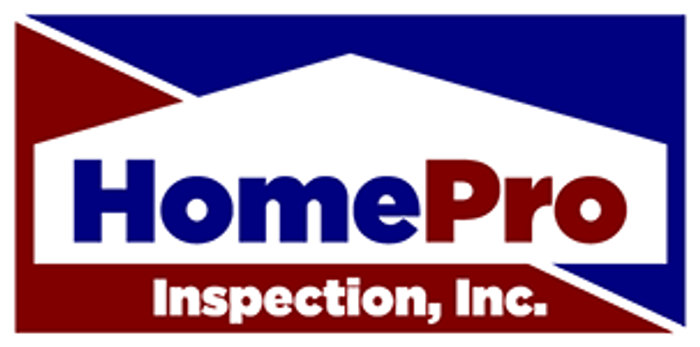

.jpg)
.jpg)
.png)
p20(5)p20(2).png)

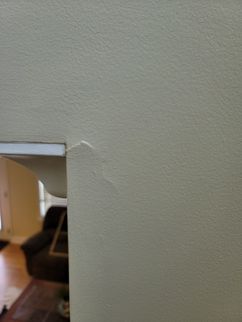
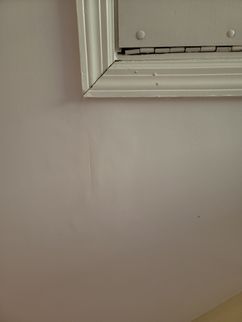
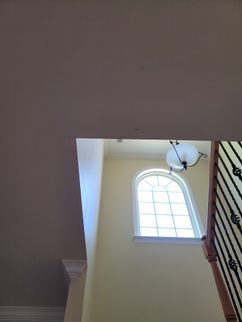
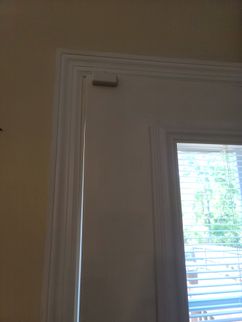
.jpg)
.jpg)
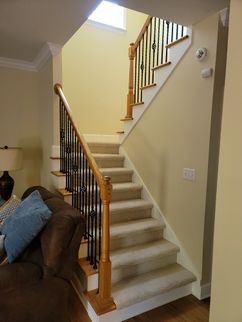
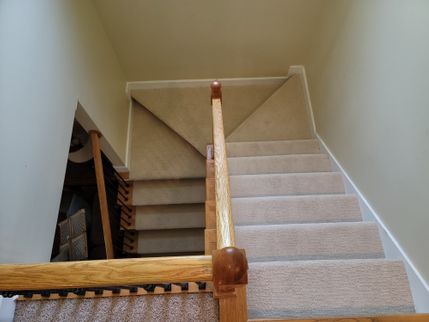
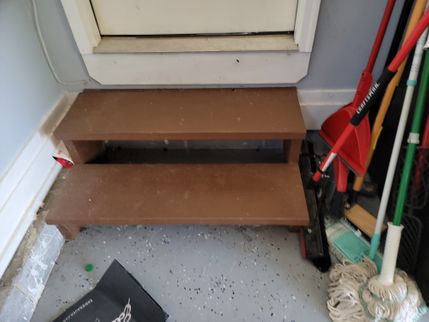
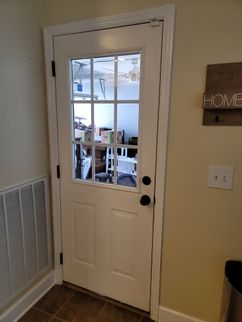

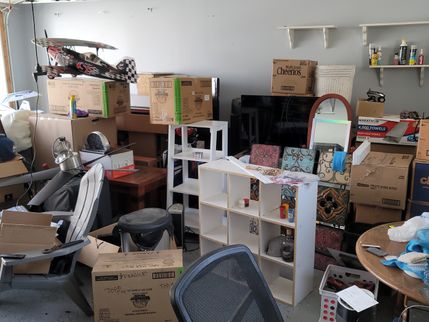
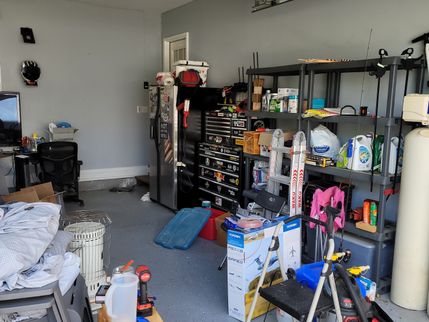
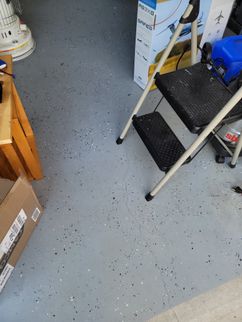
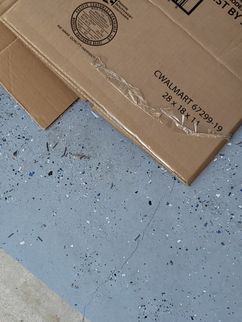
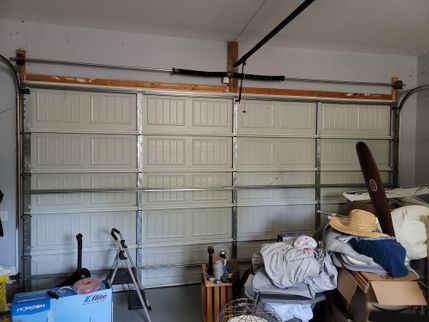
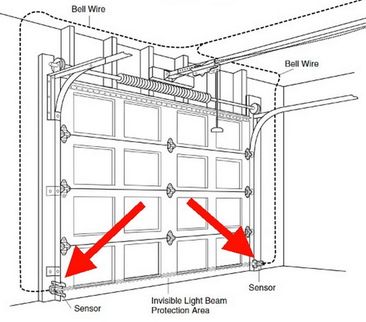
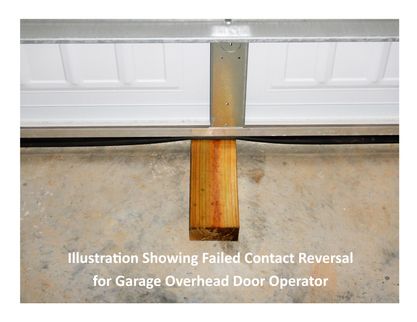
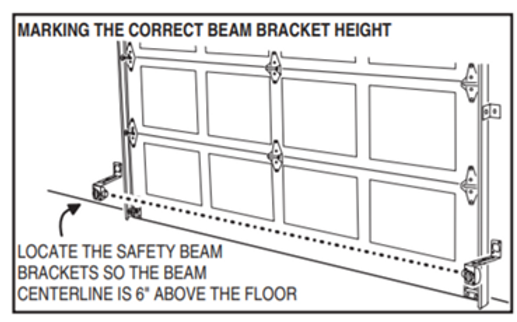
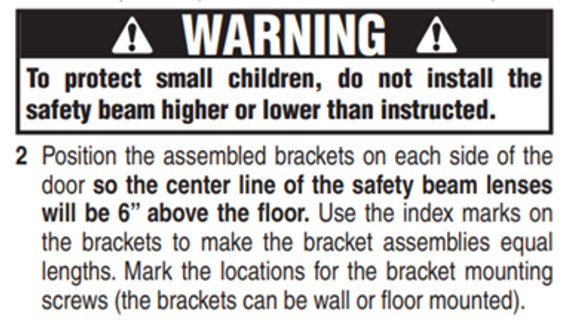

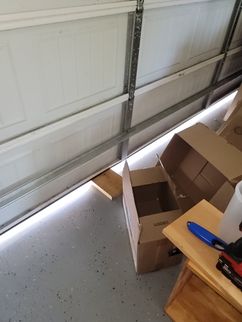

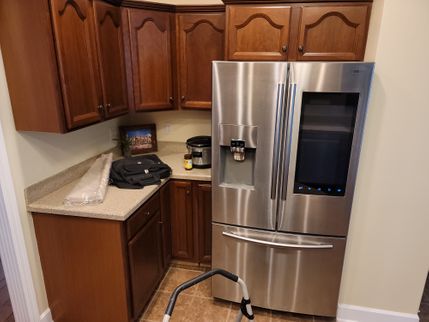
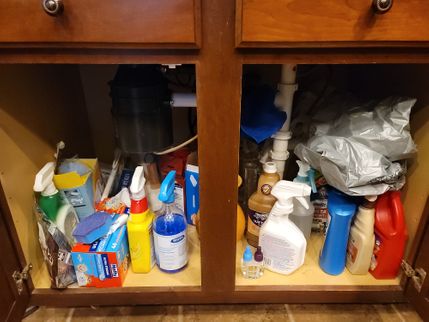
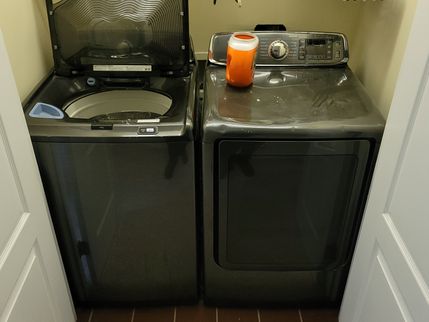

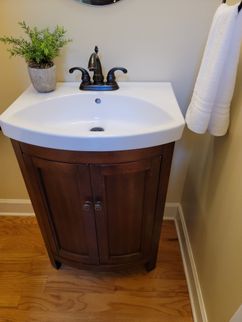
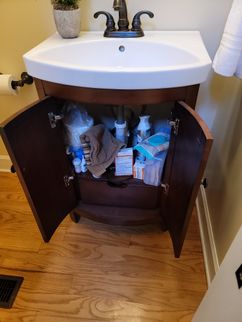
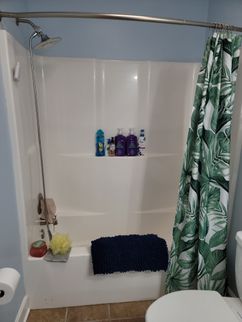
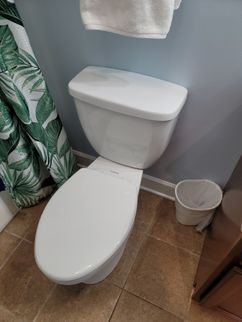


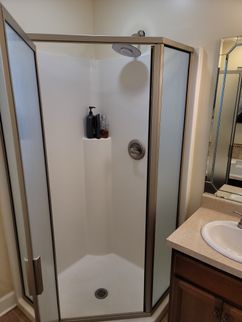




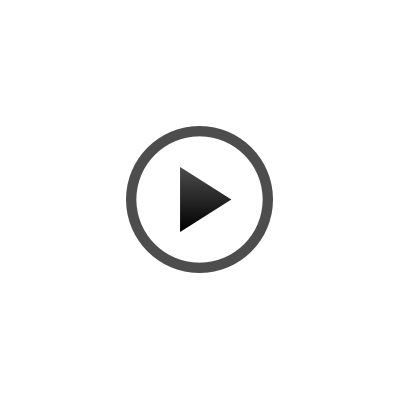
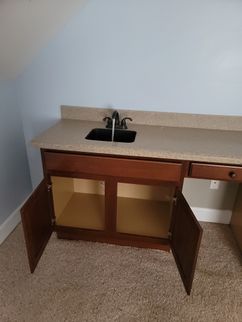
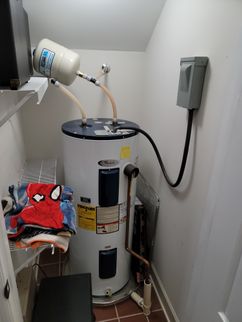

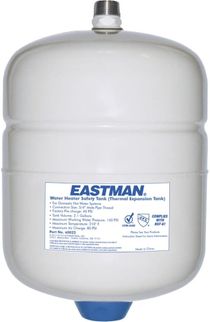

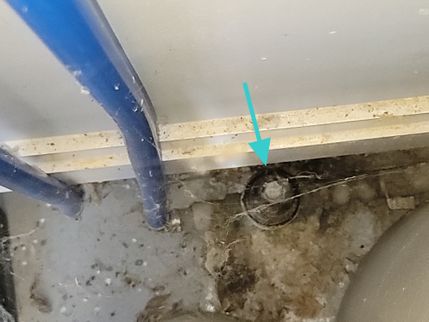


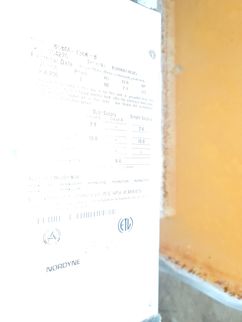
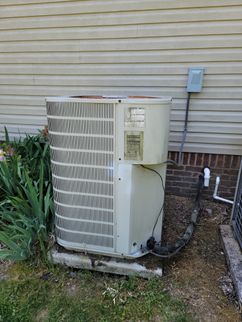





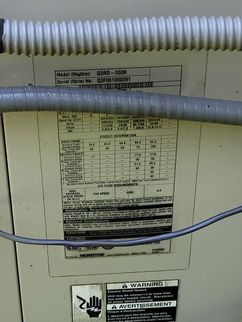
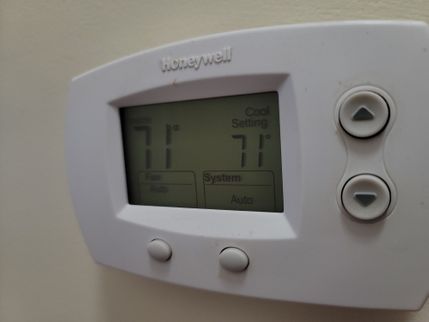
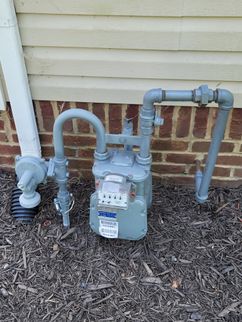

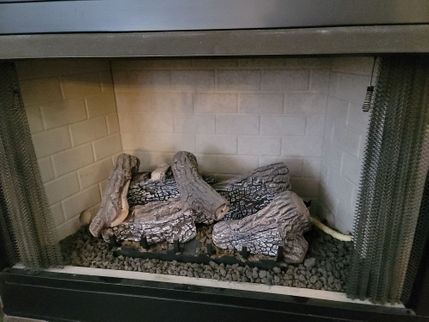
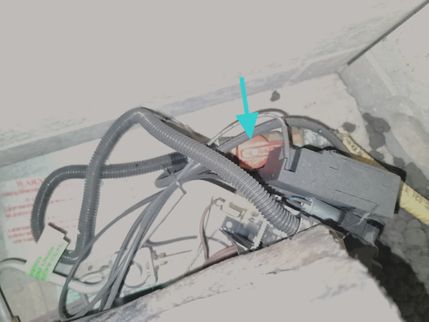
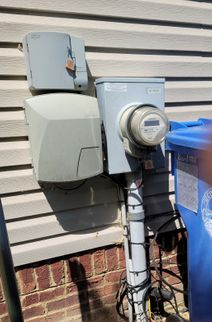
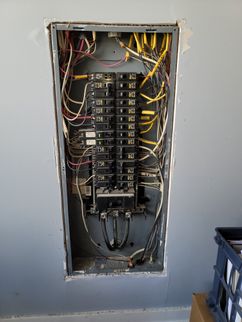
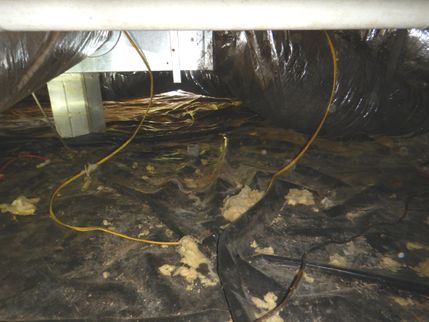
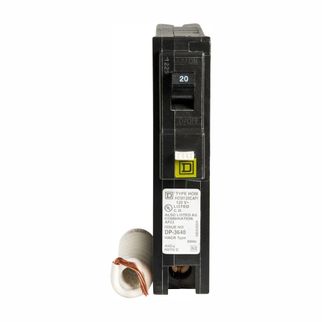
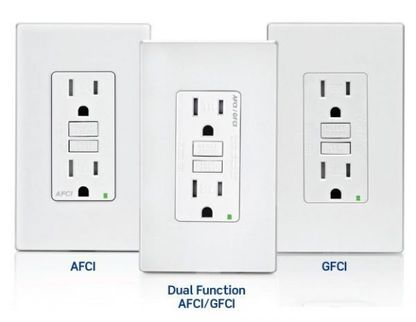

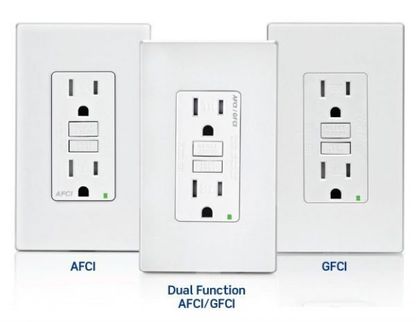
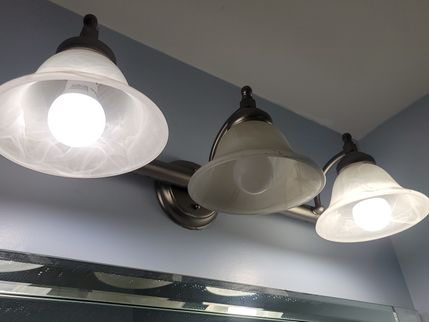
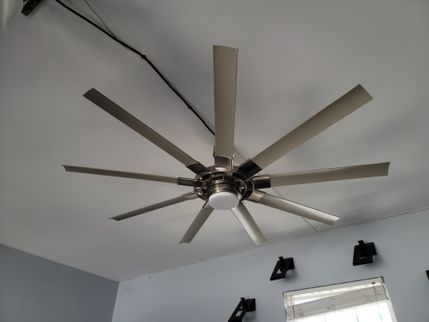
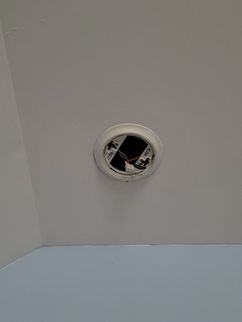
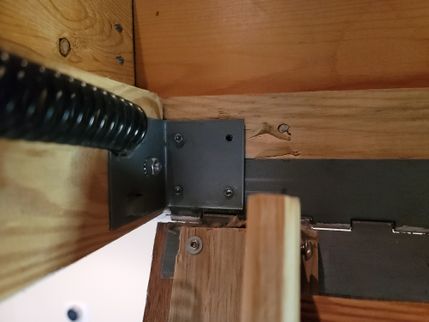
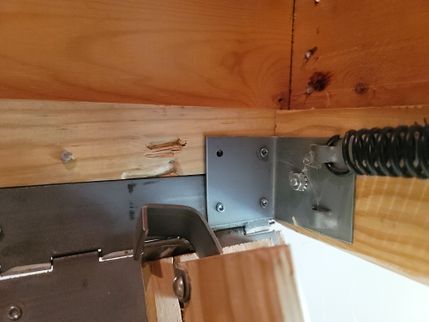


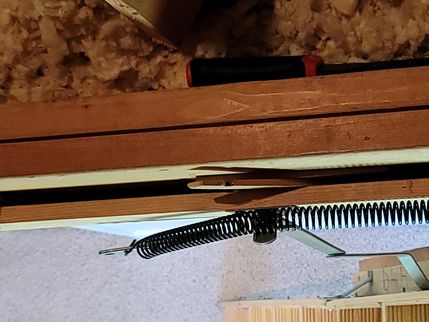

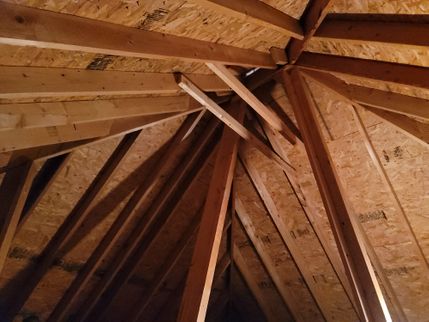
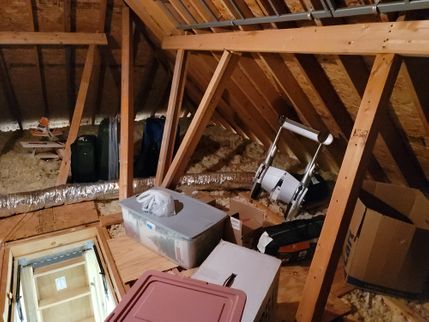
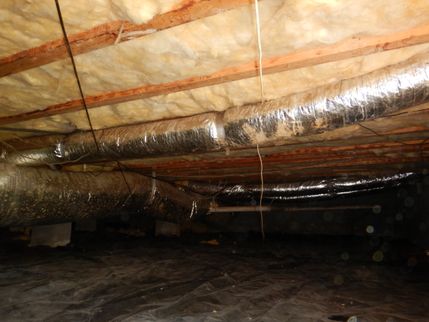
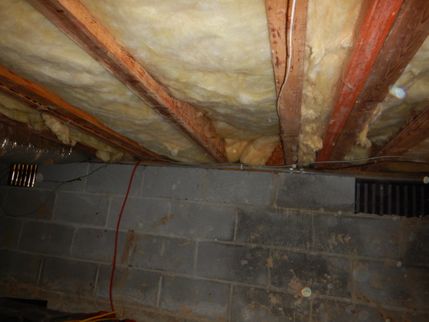
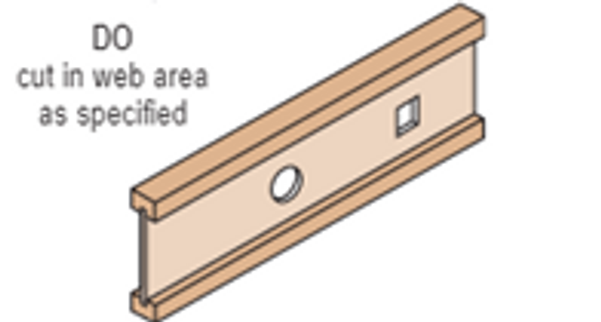
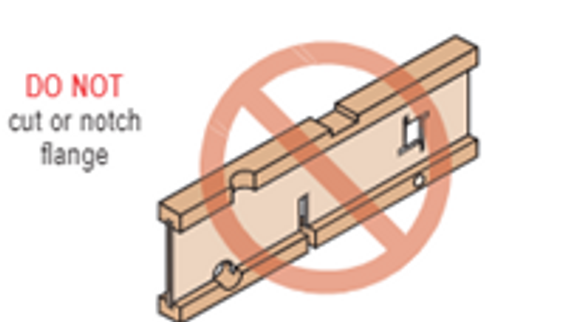
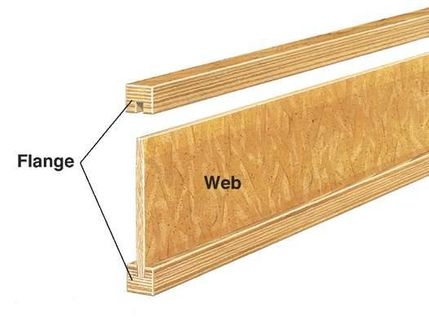
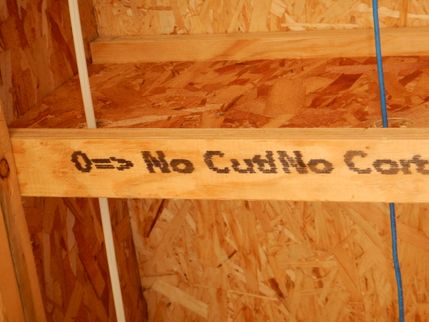


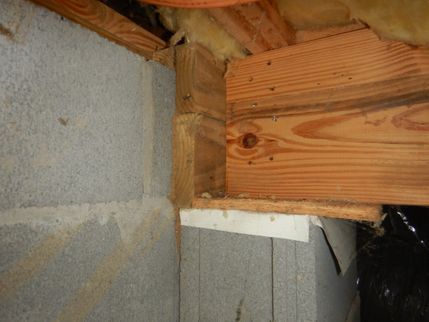
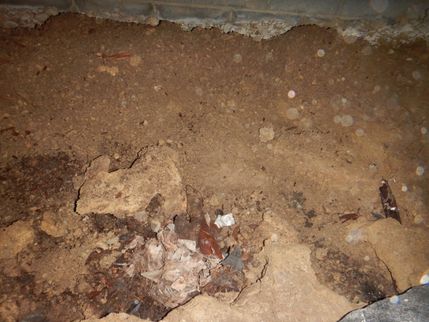


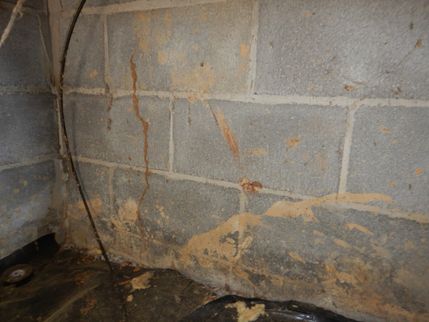

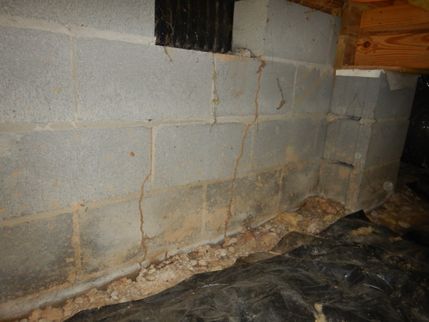
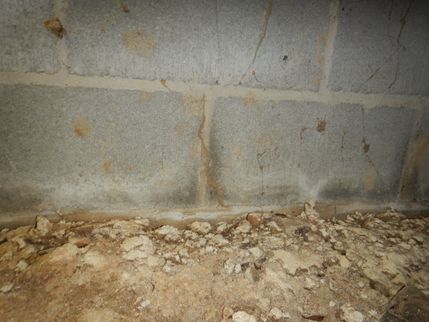
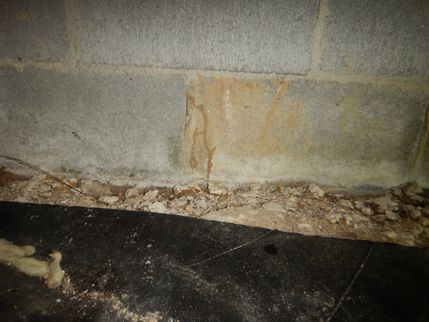



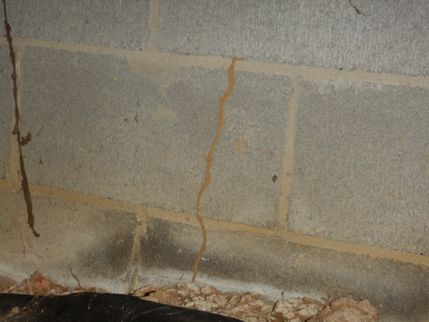
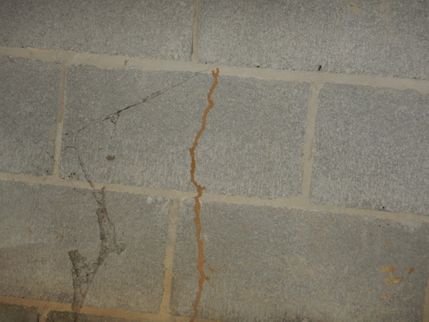
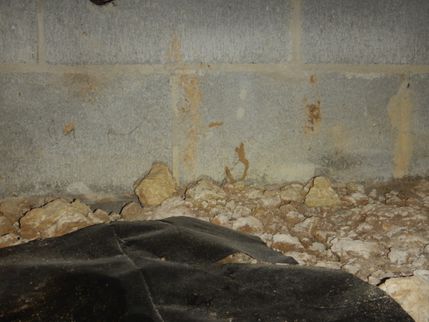


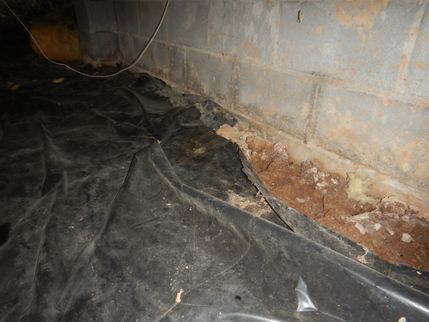
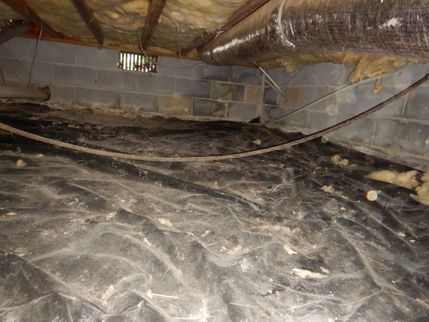
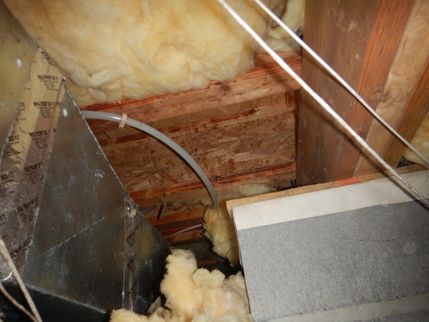
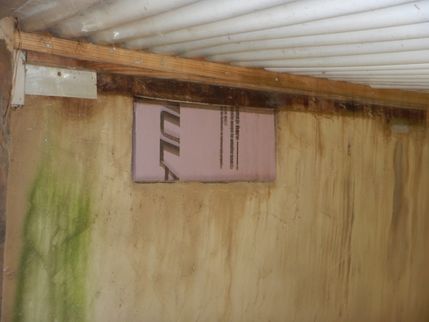
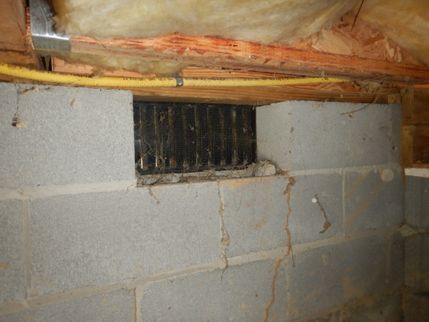
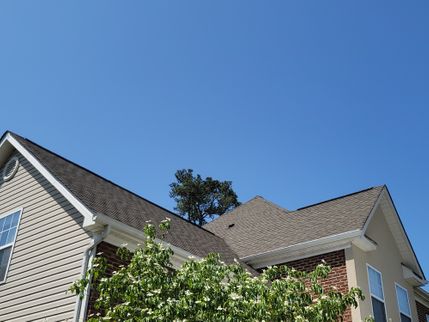

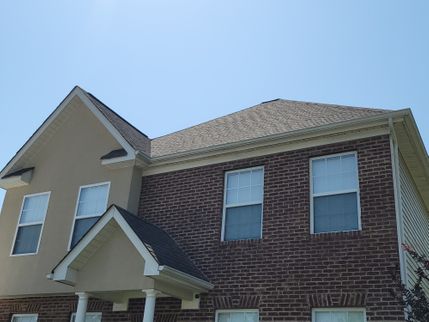
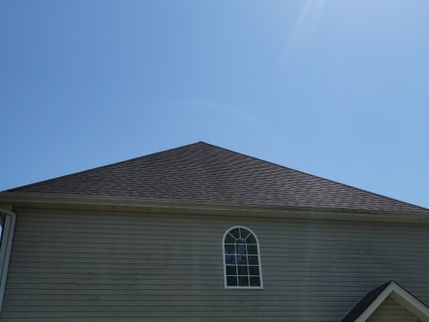
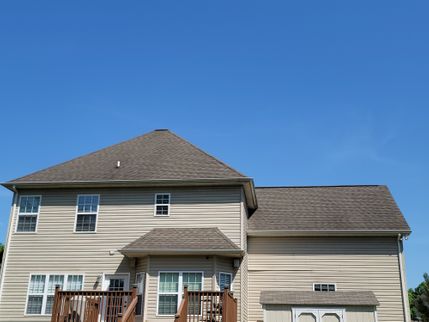
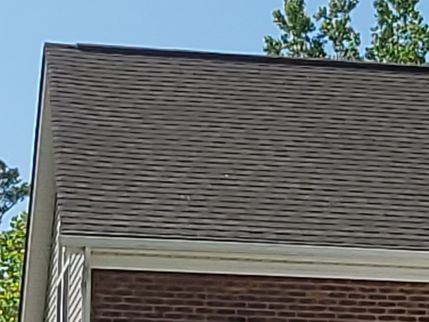
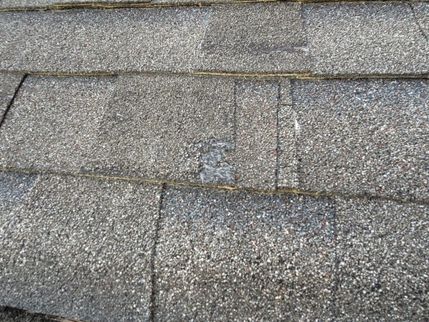

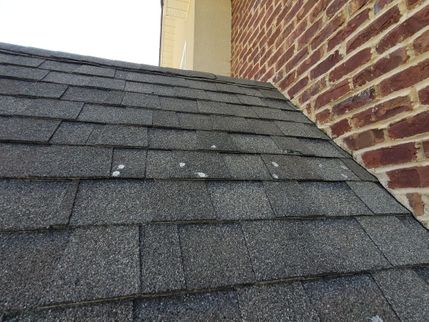
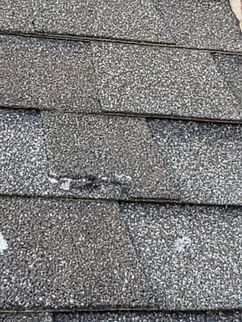

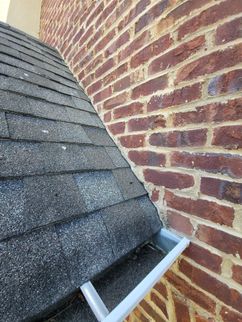
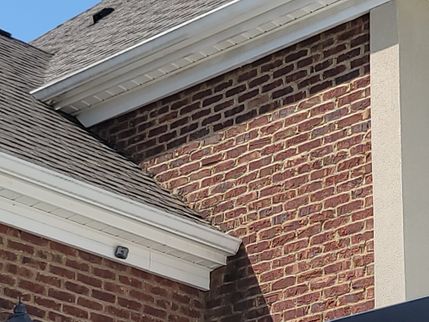

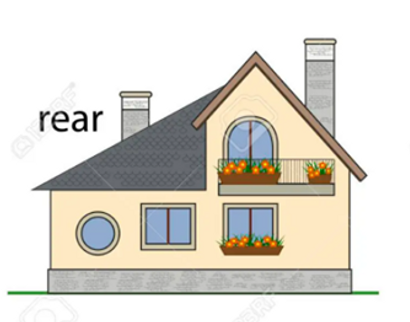
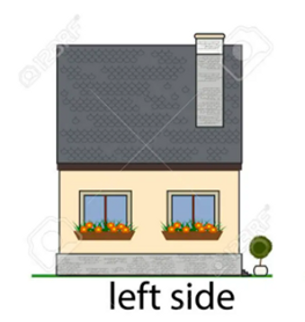
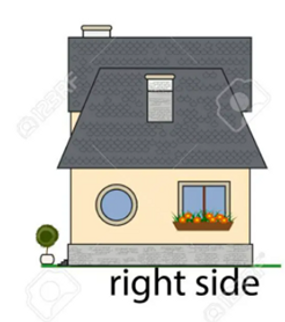
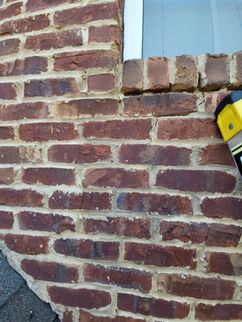
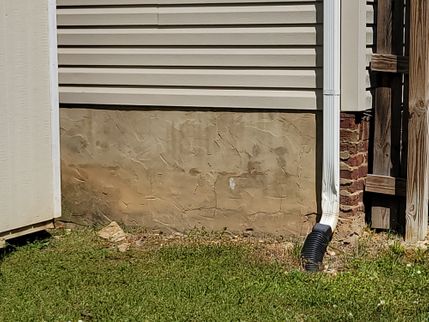
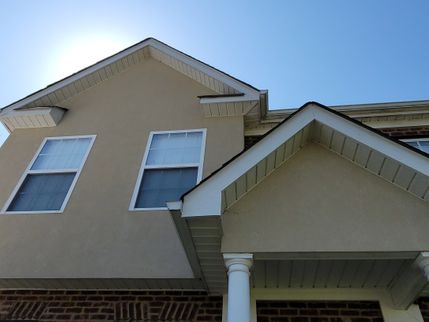
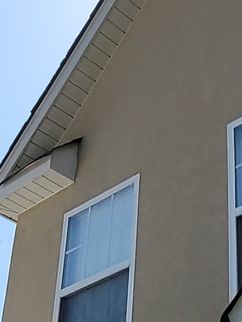
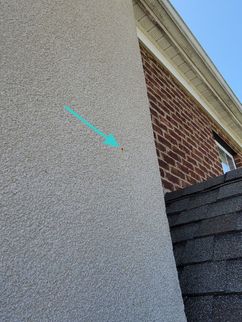
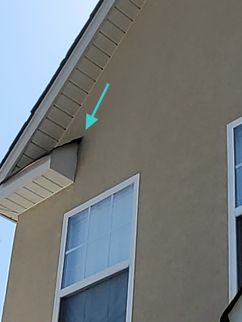
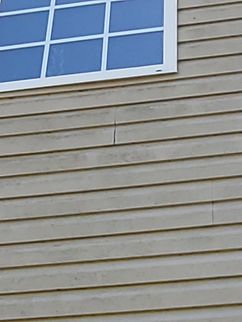

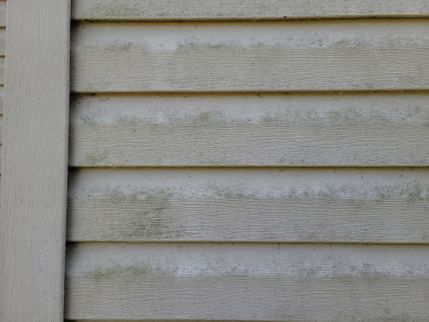
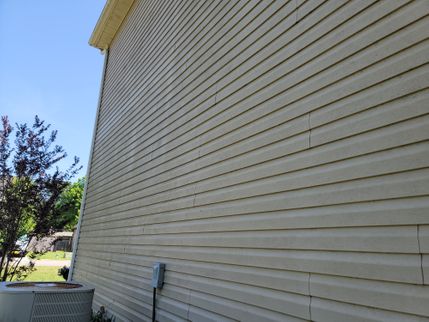
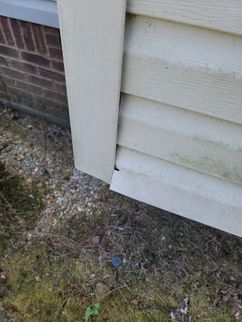
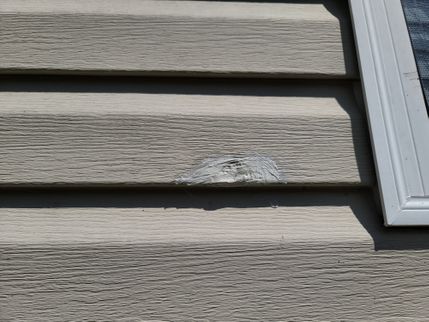
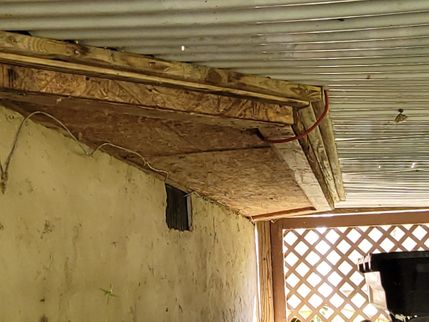

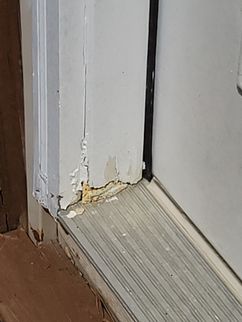
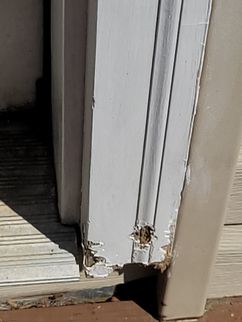


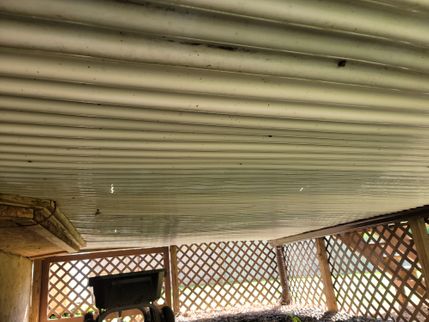
.png)
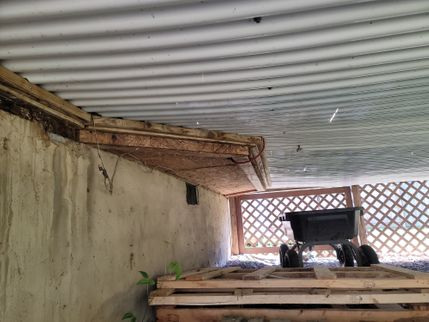

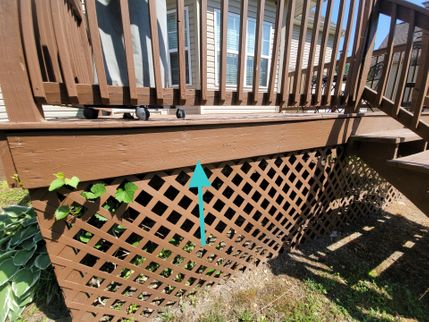
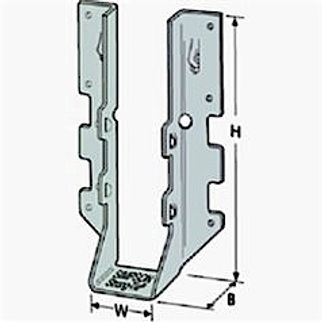

 (1).png)
 (1).png)


